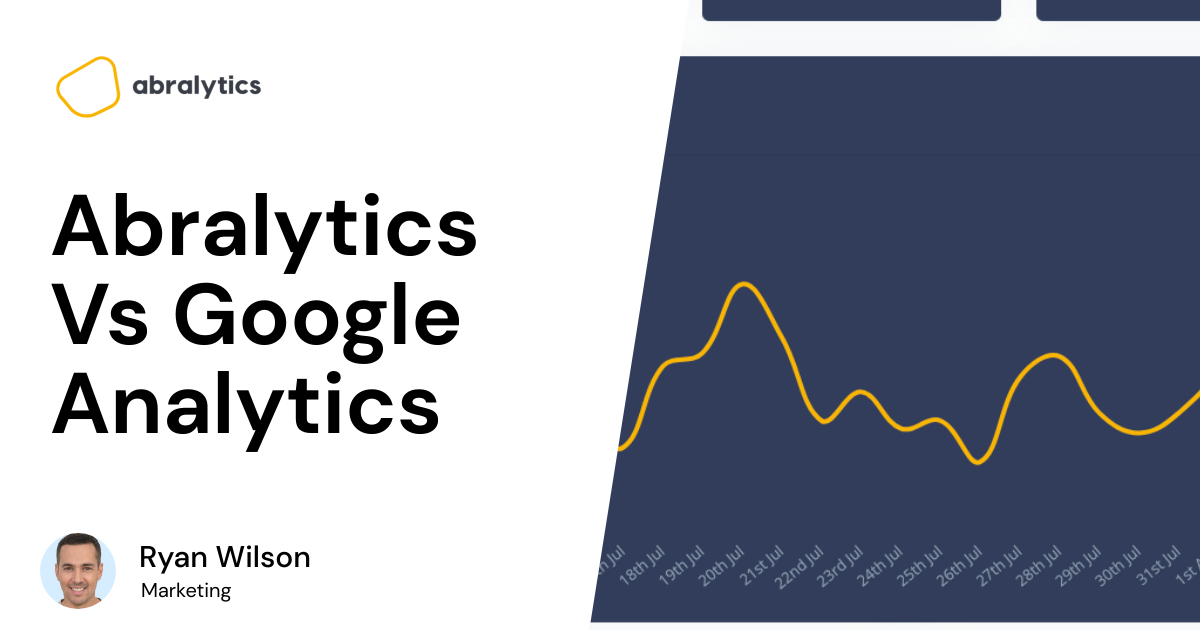When it comes to heavy hitters in Website Analytics, few can pack a punch like Google Analytics and Hubspot.
Hubspot is an end-to-end SaaS platform that offers Website Analytics and other tools, such as Customer Relationship Management (CRM) software. In the words of Hubspot itself, helping customers and businesses ‘Grow Better’. (1)
But Hubspot offers much more than web analytics. It’s an integrated marketing, sales, customer service, operations, and CRM software platform. When customers use the Hubspot Web Analytics tool in conjunction with all these other SAAS tools, the overall workflow of their company will improve.
Google Analytics also allows a person to track interactions with a website or app, allowing the user to understand better how others respond to the content of their site.
Both platforms have been around since 2005 and have helped millions of people track website traffic and performance.
Let’s look at what these Analytics Tools have in common and where they differ.
“If statistics are boring, you’ve got the wrong numbers.”
But first, if you’re new to the world of Website Analytics, you’ll find several terms often repeated. Here’s a brief explanation of a few of them to help you better understand our article:
- Landing pages
The first page on a website that a visitor “lands” on after clicking on a link or ad
- Organic search
Visitors to a site who chose to navigate there after an internet search. They aren’t there as a result of paid advertising or something similar.
- Paid search
The traffic that arrives on a website as a result of paid means only. For example, they might have landed on your page by clicking an ad that popped up in search results.
- Traffic sources
Refers to the origin from which people found your website. This could be from a Google search, clicking on an ad, social networks, or directly typing your site’s URL into a search bar.
- Single session
The time a user is active on your site or app. A session can end after 30 minutes of inactivity or when a user leaves your site.
- CTA clicks
Call To Action clicks or buttons could be an image or line of text that prompts your visitors to take a specific desired action.
What do HubSpot and Google Analytics have in common?
Most analytical software share a few standard features. Here are 5 similarities that might interest you.
- Traffic Analytics
Both Hubspot and Google Analytics allow you to track the number of visitors to your website.

Screenshot: Hubspot Sample Site
Hubspot allows you to view your web traffic in a weekly, monthly, and yearly view. It makes good use of graphs and line bars to help the user visualize how many visitors reach a website.
It also gives you a breakdown of how many users have arrived at your website as a means of direct traffic, paid social campaigns, paid searches, organic searches, and other means.
The report is customizable, meaning that you can change the view to see where your users are based geographically.
Google Analytics has an even more in-depth take on traffic reporting. For instance, it shows the user which type of devices visitors use and tracks new and recurring visitors.
- Page Views
Hubspot enables you to check the metrics of individual website pages, such as your blog posts, landing pages, and white pages. You can also toggle your page views report to display metrics of all the pages together, which will give you an overview of the site as a whole.
But it doesn’t end there. Hubspot also lets you see other important properties regarding your pages, such as the bounce rate, the exit rate, and CTA buttons. This helps dissect user behavior, allowing you to tailor individual pages to boost conversion rates.
Google Analytics differentiates between page views and unique page views, which are explained in-depth in the article ‘Google Analytics Page Views by URL.’
GA offers the page views abilities as Hubspot and with the addition of unique page views tracking.
- Goal Setting Ability

Source: Pexels.com
You set goals in your analytics tool to assess your website’s overall performance. This is especially important for e-commerce websites because you can see where people are more likely to click and spend money.
Hubspot can set goals for specific pages or teams within your organization. You can rename a goal and set the category to best suit the description, such as sales goals.
You can then track the progress in weekly or monthly reports.
Google Analytics allows you to set goals for specific conversions, such as a form submission or video view. You can then assign a value to these goals so that Google Analytics knows how much these actions are worth to your company.
This, in turn, helps GA focus its reports according to what the user sees the most value in.
- Conversion Rates
High conversion rates mean your website is doing well in the areas you want it to, while low conversion rates give you room for improvement.

Source: Pexels.com
Hubspot allows you to set up goals on individual pages to track conversions, like CTA button clicks.
While Google Analytics shows you the same metrics as Hubspot, it goes a bit further by allowing you to see every visitor interaction in a single session.
- Sources
Question: Why is it important to understand the traffic sources arriving at your website?
Answer: There are several reasons. For instance, you can check the diversity of your audience. This will allow you to make needed changes to ensure a site’s longevity, as you won’t be relying on visitors from only one medium, such as paid traffic.
Another important reason to understand the true traffic source is that you can gauge the Return-On-Investment (ROI) of your marketing campaigns. You want to know if it’s worth the time and effort you put into individual campaigns, so check if they’re bringing visitors to your site.
You also want to see if your marketing efforts are paying off, so knowing your traffic sources will tell you if the money spent on marketing is worth it.
Hubspot groups sources into several categories, namely:
Organic Search > The traffic reaching your site after searching Keywords on the Internet
Referrals > When a website sends traffic your way via an inbound link.
Social Media > When a user finds follows a link from social media to your site.
Email Marketing > Traffic as a result of Email marketing campaigns.
Paid Search > When someone follows a Pay Per Click (PPC) link to your site.
Direct Traffic > When a person arrives on your site by typing your URL directly into their search bar.
Google Analytics has a section called ‘Acquisition.’
By default, Traffic Sources will be available in this section with possible keywords such as:
Google.com > The search engine used to land on a page.
Facebook.com > The Website from which your sources came.
Direct > When a person arrives on your site by typing your URL directly into their search bar.
The Pros and Cons
Hubspot is extremely user-friendly and easy to understand. Users can set up tailored dashboards to suit their needs. But even though the program is easy to understand, it doesn’t mean that the reports lack depth.
As mentioned at the outset of the article, Hubspot is an end-to-end Saas company, which is a huge positive for them.
When using the platform, you can integrate other SaaS products, improving the overall flow and integration of your company’s software.
A negative to Hubspot is that you pay for premium services. They offer a basic trial program of 30 days, but you don’t have access to in-depth reporting unless you’re willing to pay for the premium services.
Another drawback is that the user needs to pay for ongoing technical support. So it’s a big financial investment.
A con of Google Analytics is it can be pretty hard to grasp at first. As mentioned earlier, there are many different metrics to track on GA, but setting up the custom dashboard, funnels and goals can stretch the ability of new users to the max and prove to be tiring.
A pro of Google Analytics is it has long been the market leader, making it widely available. This also means continuous support from other users, blog posts, and the company itself.
Google has also made sure that the free version is comprehensive, making it sufficient for website performance tracking across all platforms, including mobile and desktop users.
On the downside, many users have complained about Google’s view on privacy. This is a big problem as the platform has even been cited as unlawful in some European countries. (2)
Another drawback is that users will need to ‘learn the language’ of Google Analytics before being able to fully make use of the different abilities. This is because there are many different metrics and custom reports to set up before using GA.
This could prove tedious and time-consuming.
Is it possible to use the two platforms together?
Yes, it is. As Hubspot offers different SaaS products that are valuable to you as a user, you might want to consider adding the Google Analytics Tracking Code to your Hubspot platforms. Combining Hubspot and Google Analytics data will give you a powerful overview of how successful your website is.

Source: Pexels.com
Companies will also want to consider pulling data from both Hubspot Analytics and Google Analytics and combining it in one central place, like Google Sheets.
Combining data gives you a comprehensive overview of your website, combining the strengths of both Analytics Platforms and allowing you to build your SEO strategy.
What are the costs involved?
Hubspot offers a free 30-day trial, and after that, paid schemes are categorized into three levels: Starter, Professional, and Enterprise.
The higher the tier, the more features are added, and the more costly it becomes. This can be seen in the screenshot below, taken from the Hubspot bundle pricing page.

Screenshot: Hubspot Website
The paid Google Analytics pricing structure is also enough to make your eyes water. Yes, the basic plan is completely free to download and use. But users will know that there are limitations to this plan, and eventually, your site will outgrow the limits.
The paid version of Googles Analytics tool is called Google Analytics 360. It also has different tiers, and pricing starts at a whopping USD$150 000 per year.
Too much, Too soon?
“You can’t run a business today without data. But you also can’t let the numbers drive the car. No matter how big your company is or how far along you are, there’s an art to company-building that won’t fit in any spreadsheet.”
Both Google Analytics and Hubspot clearly have much to offer. Both have been around for a long time and have just about perfected their platforms.
However, there’s so much to consider with these platforms that new users could get lost in the endless data and metrics reports.
So why not start with an Analytics tool that won’t give you sleepless nights?
Abralytics has a user-friendly interface that allows you to easily create reports and track all the critical metrics discussed in this article, like traffic source and CTA clicks.
There’s also a huge advantage to its tracking code. It’s only 3KB in size, which means it has a minimal effect on the load speed of the websites you use it on. And with Abralytics, you own 100% of the data collected throughout your tracking.
Ready to check out our awesome platform? Sign up now for the free trial.
Further Reading:
- Google Analytics: The main pros and cons
- Google Analytics alternatives: The 5 best options
- How website performance affects conversions
Article Resources:




